100 years of industry, CULTURE AND ARTS
Stara Rzeznia is a place inscribed in the history of Poznan. The location in the heart of the city and the beauty of the historic buildings create a huge, currently untapped potential. Thanks to the new project it has a chance to wake up to life again.
Old Times
Stara Rzeznia is located in the area of the former medieval servant settlement known as Tama Garbarska. The inhabitants of the settlement were engaged in leather tanning, which was possible owing to its proximity to the river and the city moat.
The area was used as a wet pasture belonging to a nearby Dominican monastery. Over time, orchards and gardens were planted there replacing the pastures. The name Laki Dominikanskie (Dominican Meadows) survived almost to our times, despite the fact that this area became the property of Jan Groff, a wealthy town councilor in the 16th century.

Beginnings
The Municipal Slaughterhouse was built in the years 1897–1900 by decision of the Poznań City Council. The creator of the architectural design was Felix Moritz, a city building inspector and a talented architect. First, however, a specially appointed commission visited similar existing facilities including in Leipzig, Magdeburg, Cologne, Gdansk, and Wroclaw. It is no wonder that the Poznań slaughterhouse was soon recognized as one of the best designed in the country.
Due to the proximity of the Warta River, the level of the entire area was raised by three to five meters. The original budget of 2.2 million marks was exceeded by more than a quarter.
The Municipal Slaughterhouse began operating on 1 March 1900 and was repeatedly expanded in later years. Ultimately, the site housed not only buildings related to slaughter and meat production, but also an animal exchange, numerous warehouses, modern engine and boiler rooms, a castings processing department, and a freezer, among other functions. A hotel with an excellent restaurant and hotel rooms awaited the weary traders of cattle, pigs, and horses.
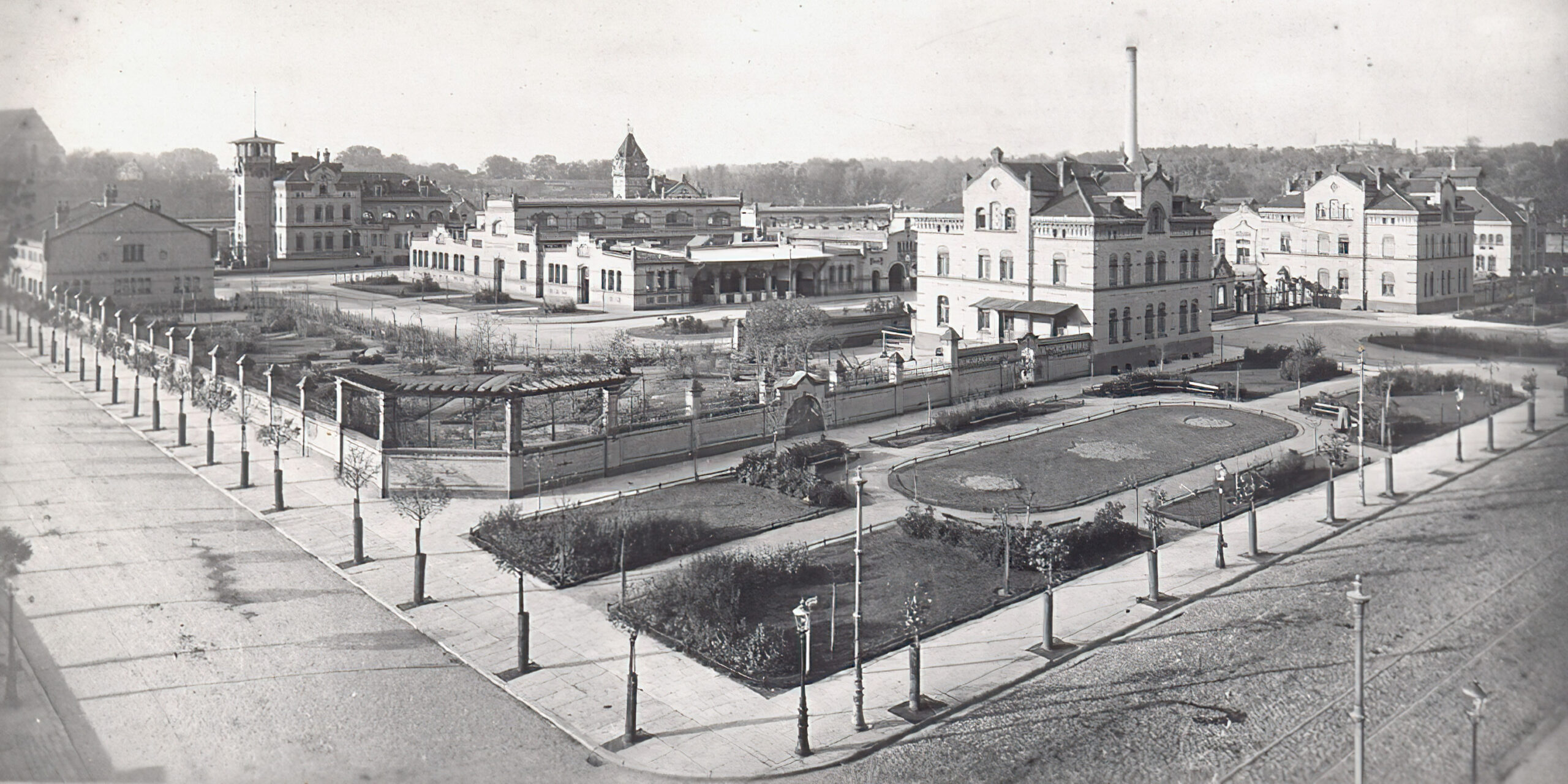
View of the Municipal Slaughterhouse circa 1900 from the intersection of Garbary and Grochowe Laki Streets. The photograph comes from the collection of the Municipal Monument Conservator in Poznań.
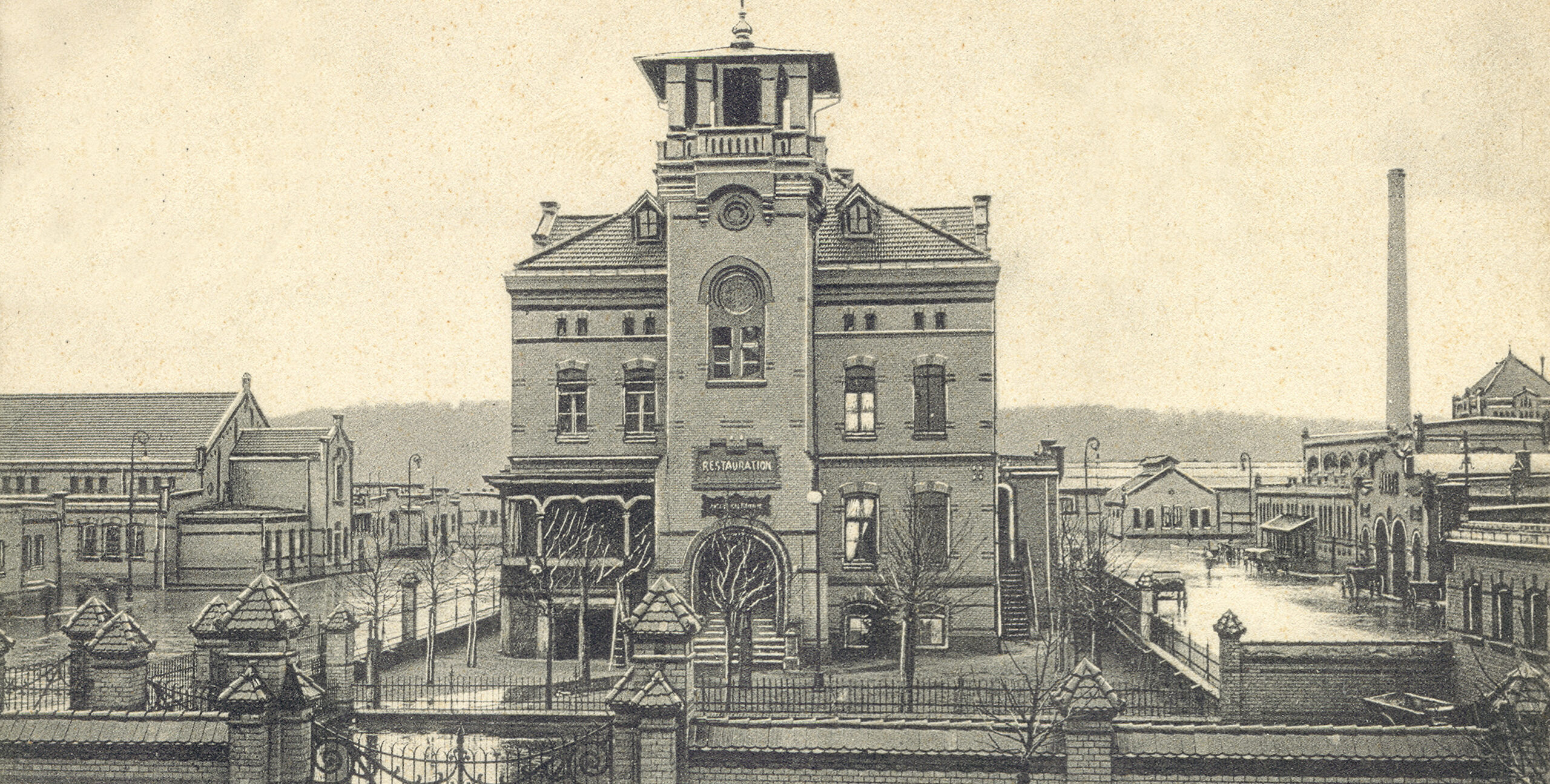
The Tuscan-style tower of the Resursa building loomed over the stock market and the restaurant and hotel fitting into the eclectic nature of the neo-Gothic complex of the Municipal Slaughterhouse.

Kazimierz Halupka (first on the left in the photo with his friends; in the middle in the seat, in the photo in the carriage) worked in the Municipal Slaughterhouse before the war as a butcher. During his apprenticeship, his duties also included driving a horse-drawn carriage and delivering ordered goods to customers.
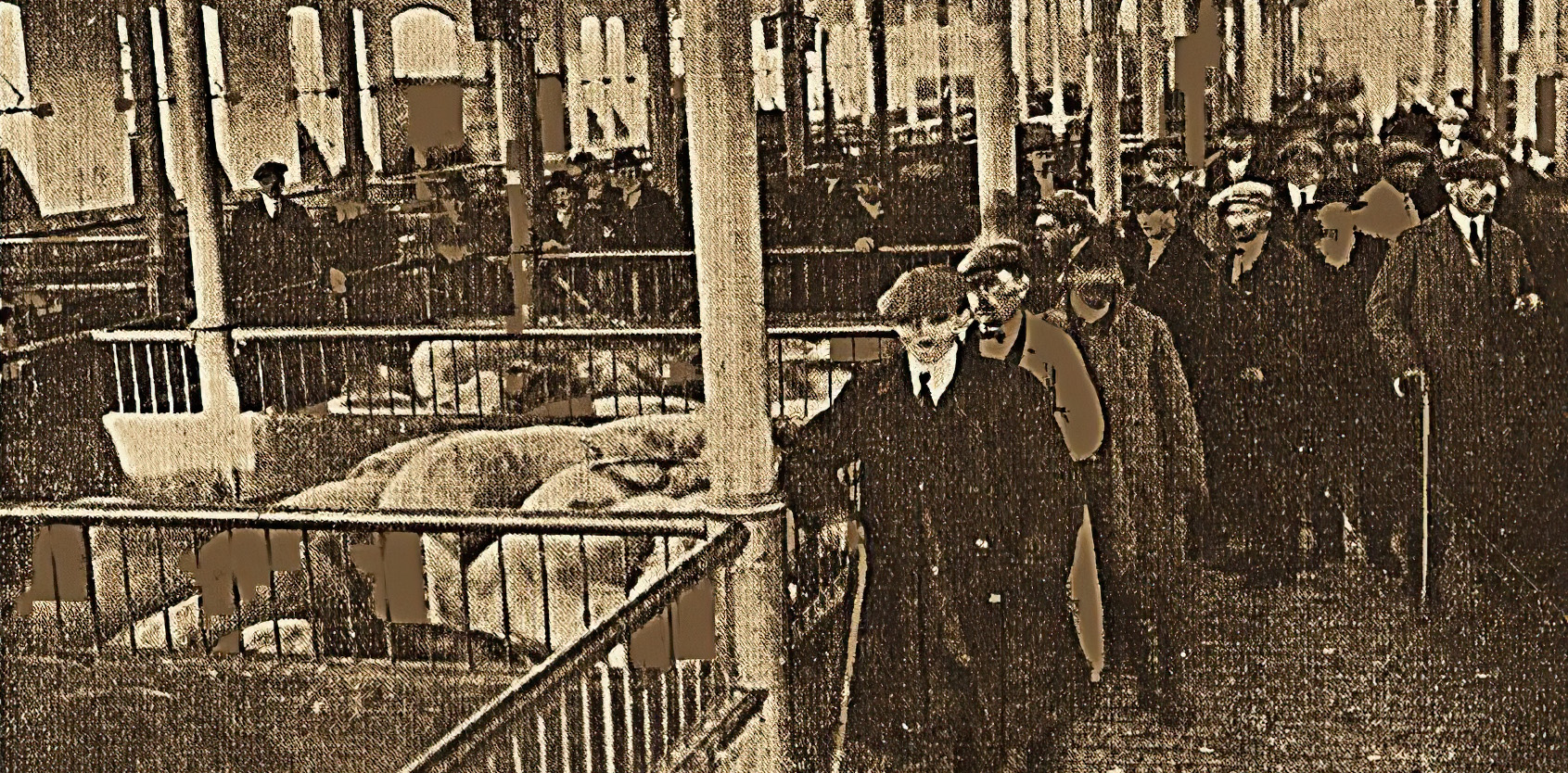
The pig market was equipped with spacious livestock pens, as well as adjacent halls for cattle, calves, and sheep.
After the war
It is estimated that as much as 90% of the equipment and devices and 60% of the slaughterhouse buildings were destroyed as a result of military operations, mainly during the battles for Poznań Citadel in 1945. Despite considerable damage, the plant continued to operate after the war. The slaughterhouse became part of the District Meat Company in Poznań.
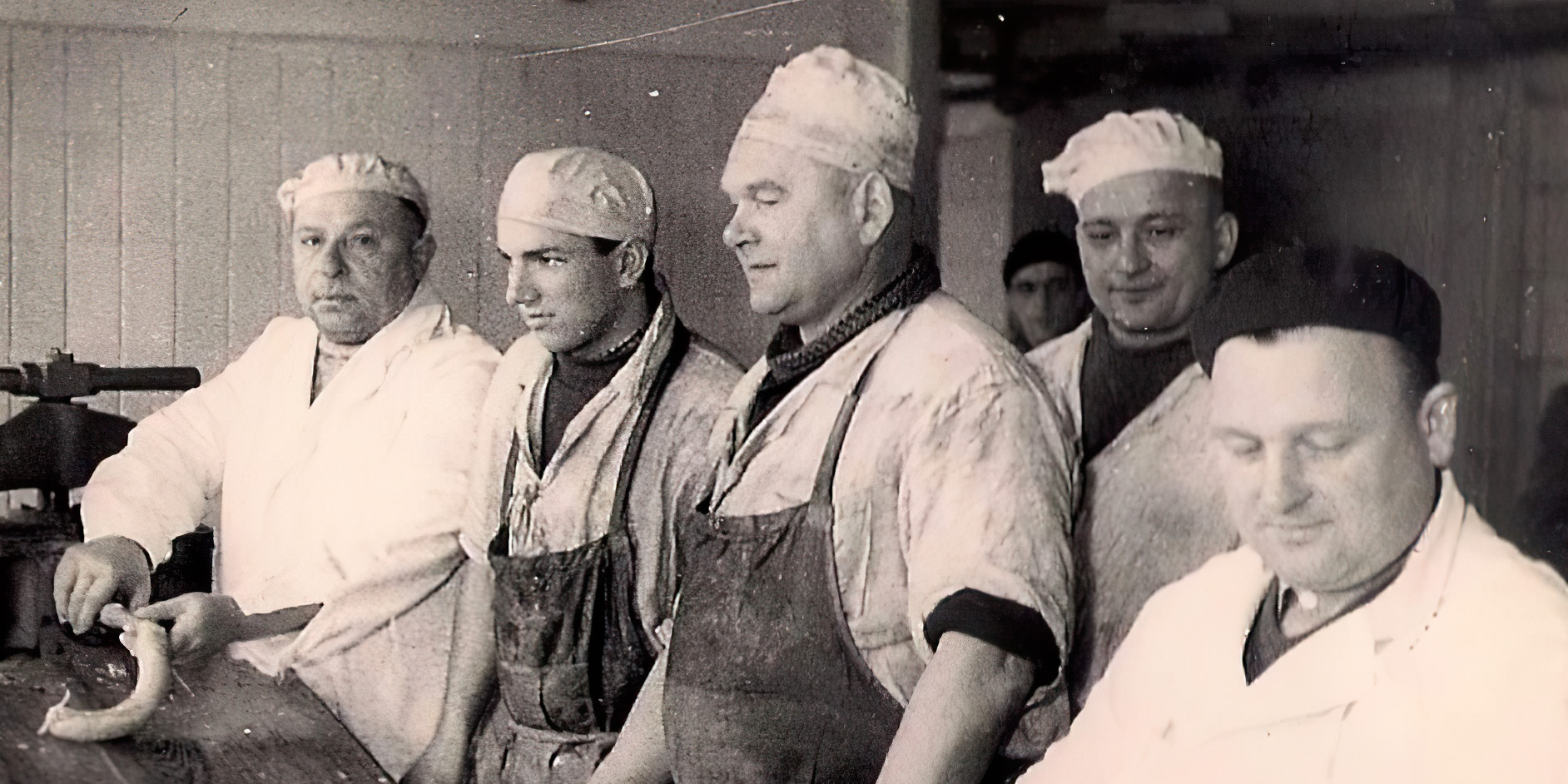
Under the communist rule
After the war, in place of the elegant square decorated with flower beds, a tram loop was installed just in front of the slaughterhouse on the Garbary Street side. Trams No. 5 and 21 operated here until the mid-1980s.
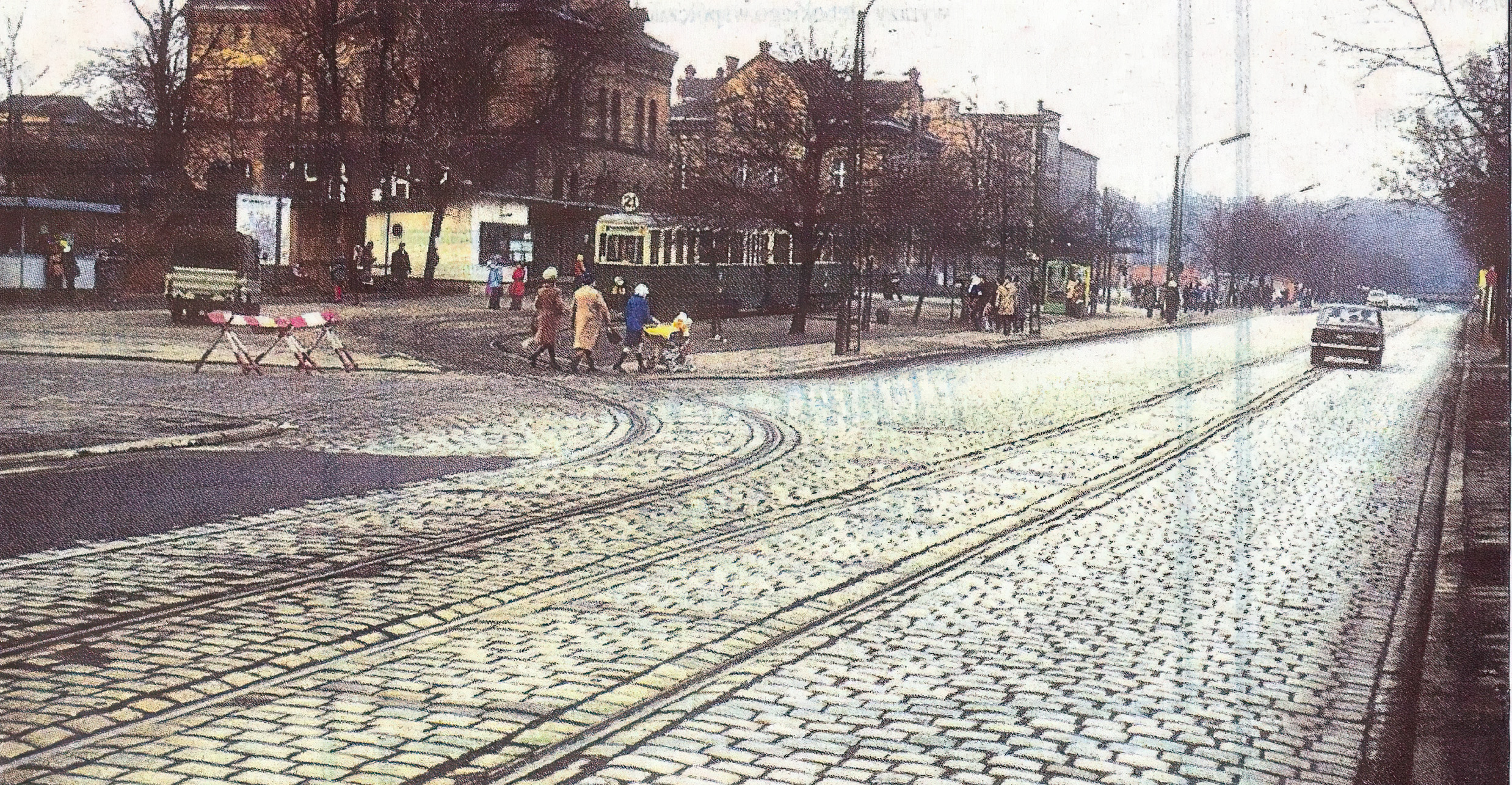
Modern Times
The complex of buildings of the former slaughterhouse was entered in the register of monuments on 31 October 1984, long before the final cessation of production operations in this area. It was not until 2000 that the works were transferred to the plant located in Robakowo near Kornik. After the termination of slaughter operations, the buildings of Stara Rzeznia were abandoned and until now have not found a permanent development, except for an antiques market, a flea market, and occasional cultural events.
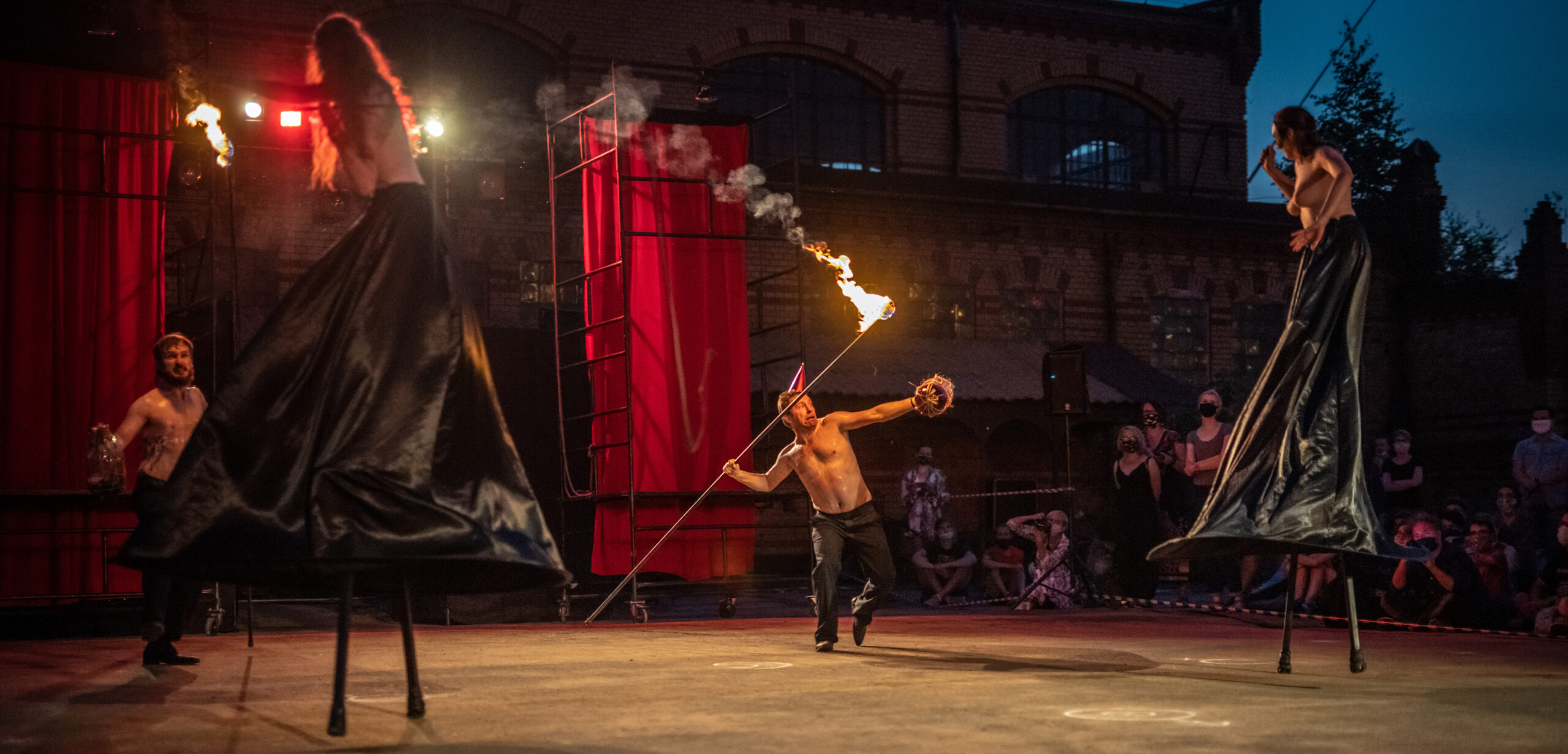
The abandoned meat factories have repeatedly opened their doors to ambitious, unusual artistic events. Theatrical groups performing as part of the Malta Festival are especially fond of this post-industrial space.
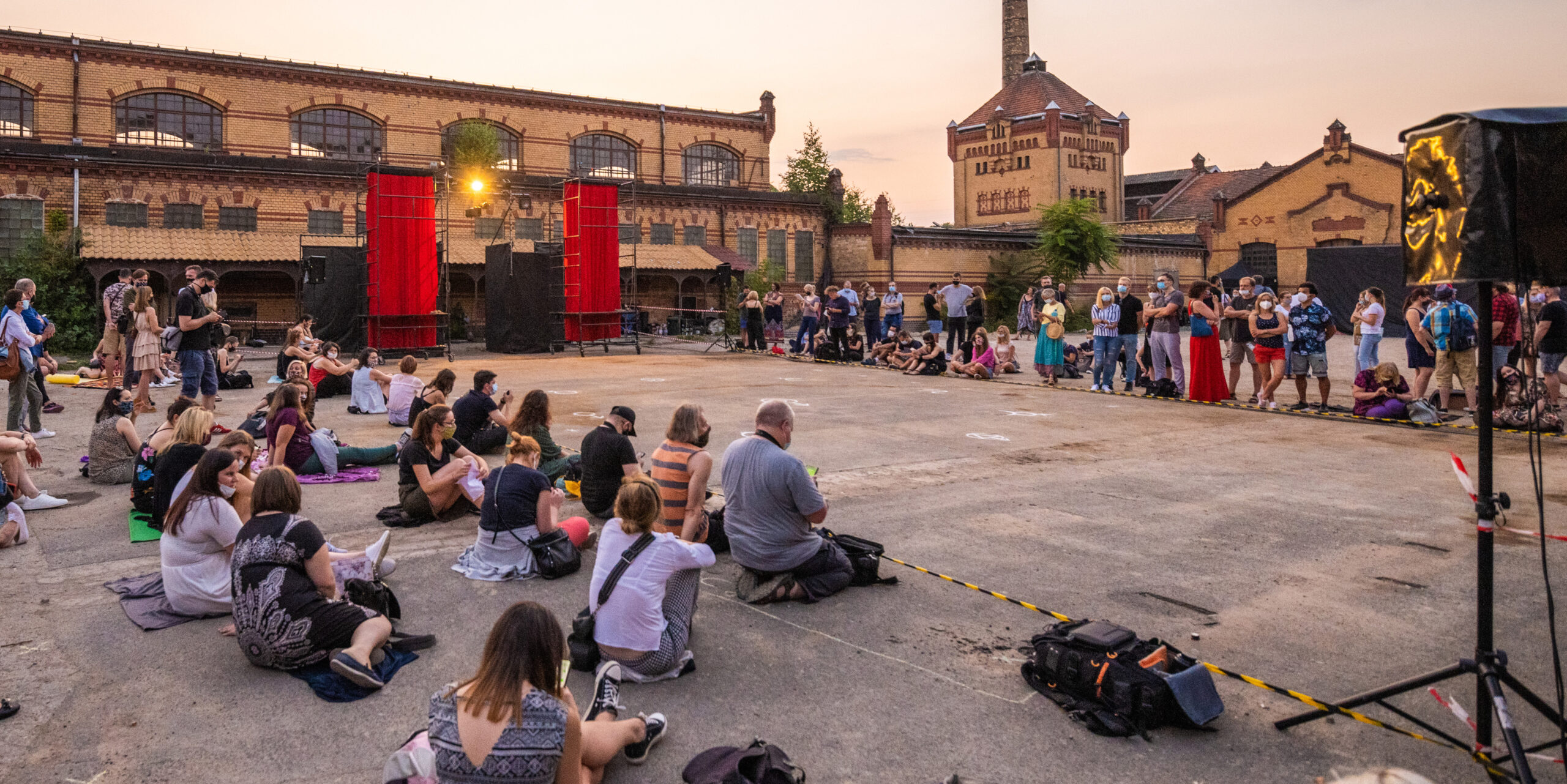
In recent years, groups of such class as Teatr Osmego Dnia, Teatr Biuro Podrozy, and Teatr Polski from Poznan have performed their plays within the confines of Stara Rzeznia.
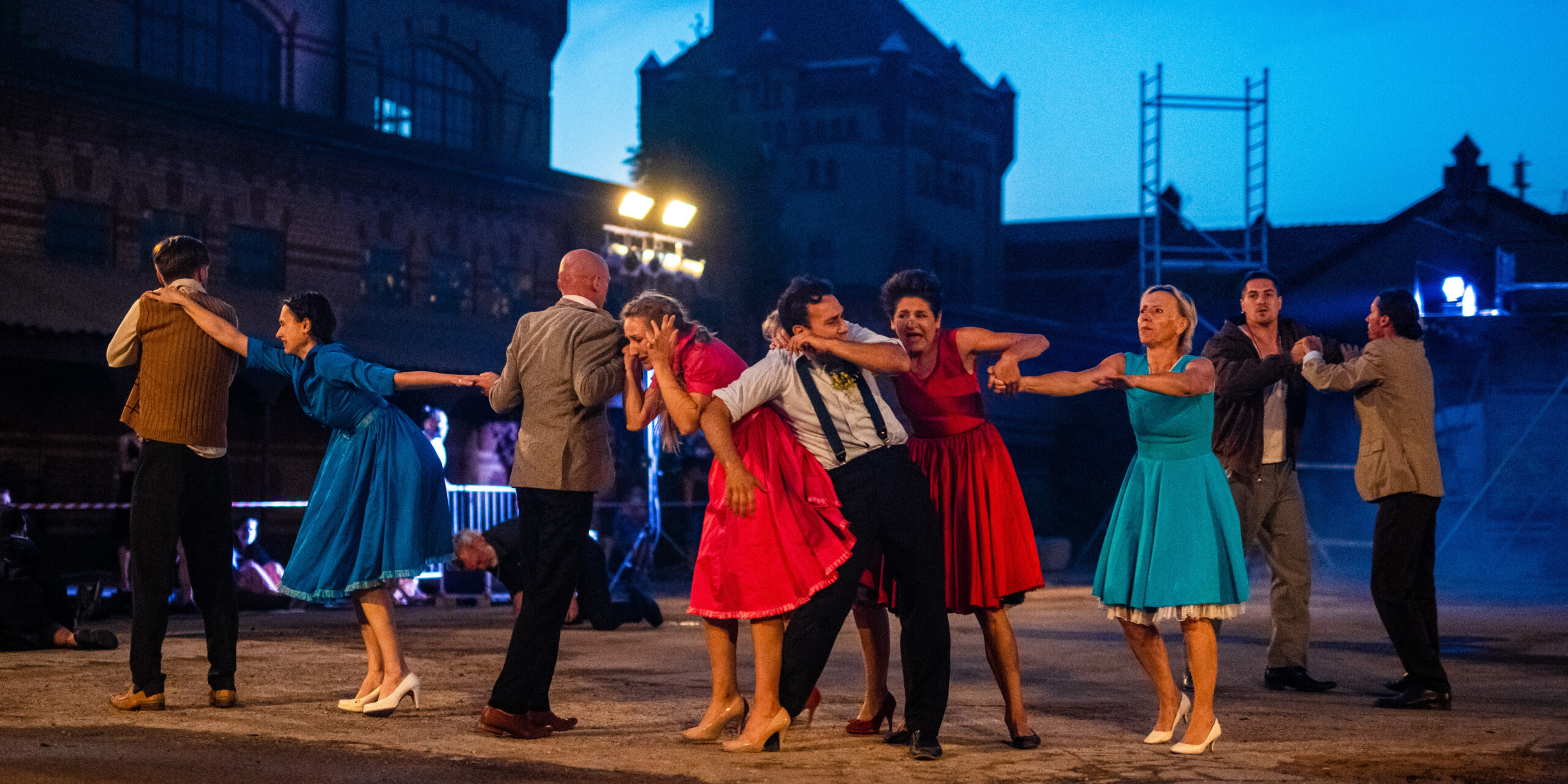
The most memorable performances staged in the historic buildings include the project Otwarte Miasto Teatr Osmego Dnia, Hamlet directed by Maja Kleczewska and based on a script by Zbigniew Libera performed in the former slaughterhouse on a blood-red carpet, and the monumental open-air spectacle of the KTO Theater entitled “The Blind” inspired by a novel by Portugese writer Jose Saramago
Revitalization
In 2017, an international investor, Vastint Poland, came forward with a new land development initiative. As part of the preparations for the investment, the company implemented the Architectural and Conservation Research Program (PBKiA) under the supervision of the Municipal Monument Conservator and carried out the demolition of buildings excluded from the register of monuments. The interiors of all buildings adapted for new functions will be appropriately renovated.
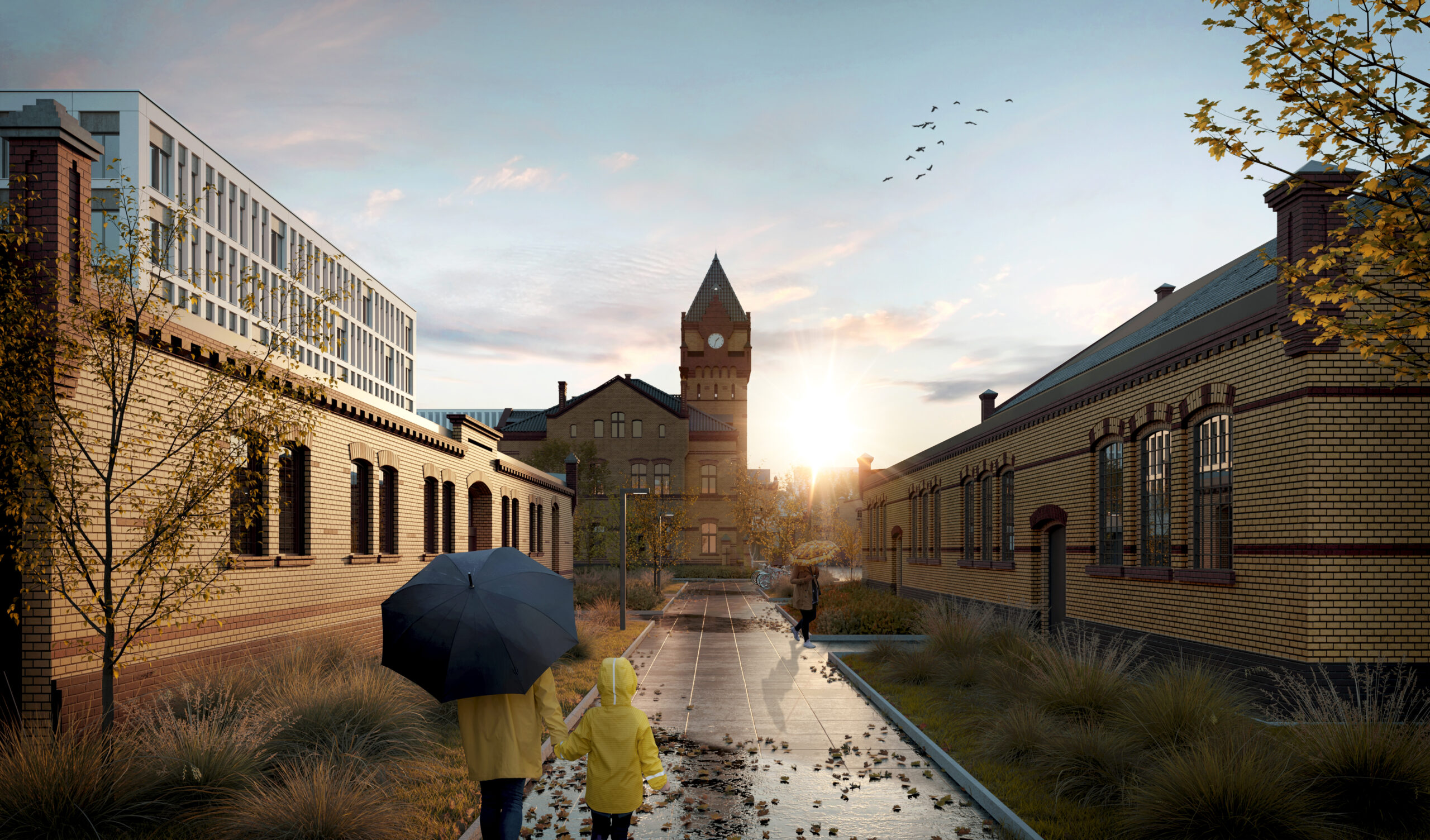
There are buildings to be preserved from the turn of the 19th and 20th centuries on the property, including the main hall, the boiler room, the engine room, and the water tower. These facilities will be carefully restored and, after revitalization, they will constitute an attractive core of the new project.